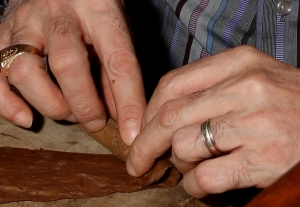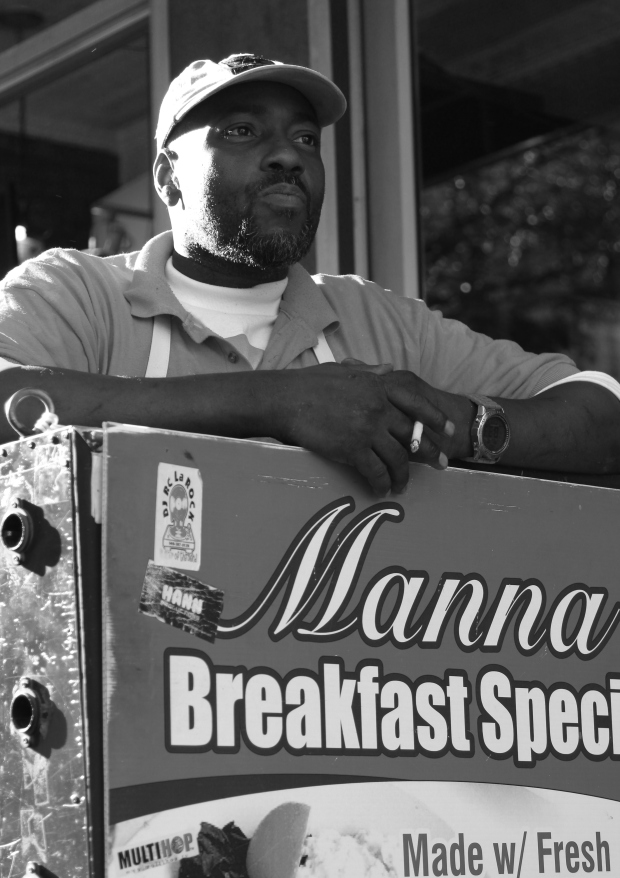Archive for category Public Relations
A lesson in business and life from the Dutch
Posted by johnlamb1 in Business Communications, Business skills, Career advice, Customer service, Personal development, Public Relations on April 28, 2019
Years ago, a conference presenter spoke about doing business with the Dutch. He noted that while it generally took them much longer to commit to something, once they signed on, he said, they were committed 100 percent.
The speaker paused and then said, “Compare that to Americans.”
Wow, he’s right. How often have you seen people offer or promise to do something then miss a deadline or completely blow off the project? We’ve all been pulled away by competing priorities, and while it’s often understandable, the odds are good that someone was let down by the change of direction.
Years ago, the acronym DWYSYWD began circulating around Corporate America. It’s meaning, Do What You Say You Will Do, must seem obvious — perhaps even silly — to the Dutch. After all, why do you need to be told to do something you agreed to do?
Food for thought…..
More than ever, short and simple is better
Posted by johnlamb1 in Business Communications, Business skills, Communication theory, Employee Communications, Public Relations, Uncategorized, Writing on March 10, 2019
Ever feel like you’re on a treadmill that’s going faster and faster? That seems to be the new norm, with less downtime to just sit and relax for a moment.
As people feel the constant tug for their time and attention, the importance of clear, concise communications becomes more important.
So how do you reach someone who is reading your message while making dinner, helping the kids with homework, and answering an after-hours text message from her boss?
Some thoughts:
- Begin with your most important message.
- Use bullets. They help break up copy and make reading easier.
- Opt for simple words and avoid jargon, acronyms, and words that readers may not understand.
- Use examples to illustrate complicated points.
- Offer a contrast or comparison to create an image in your readers’ mind (“The ship is the length of two football fields.”)
- Stay away from too many fine details.
A few lessons from years in PR
Posted by johnlamb1 in Business skills, Career advice, Customer service, Employee Communications, Personal development, Public Relations, Seinfeld on February 24, 2019
One of the great honors of my career was receiving the Edward L. Bernays Award from the Maine Public Relations Council. It’s the organization’s highest honor, and I’m humbled to have my name listed alongside some of the great PR people in our state. My acceptance speech shared a handful of tips gleaned over the years, and I though you might find it of some value:
Thanks, Linda for that warm introduction.
And thank you to Kelly, the MPRC board, and to the Bernays Committee for this award.
I’m touched, honored, and humbled to know that my name will be listed alongside some of the best public relations people from our great state.
I wrote three different drafts of today’s remarks, but none felt right. I don’t particularly like talking about myself, and because this is a conference, every speaker should give the audience a takeaway or two, so how about if I to share a few tidbits of the best advice I’ve received through the year, with the hope that one or two might resonate with you.
- Doing the right things is the always the right thing to do — particularly in PR. We need to be the conscience of an organization. A corollary to that is something Mark Twain said: the best thing about telling the truth is that you don’t have to remember anything.
- The next one came from the big store at the top of the hill, L.L. Bean: Put your customers first and remember that they’re the reason you’re in business.
- At the end of the day, the person you have to answer to is the one in the mirror. If you do that, everything else seems to fall into place.
- Perhaps my favorite quote is from Thomas Jefferson who said he was a big believer in luck and the harder he worked, the more if it he had.
- Finally, trust your gut and trust your instinct. Or in the words of the great American philosopher Cosmo Kramer, “what does the little man inside you say? You’ve gotta listen to the little man…the little man knows all.”
In closing, I’d like to thank the many people who have provided guidance, encouragement, and unwavering support to me for so many year. I accept this award on behalf of all of you, and in my mind, your names are etched on this with mine. But, I’ll keep it at my house.
Thank you again for a few minutes of your time…..I hope you enjoy the rest of the afternoon….
16 Tips for hopeful PR practitioners
Posted by johnlamb1 in Business Communications, Career advice, Employee Communications, Marketing, Personal development, Public Relations, Writing on October 25, 2015
I was recently interviewed by a budding PR practitioner for a college class. The conversation made me think about the pros and cons of the business, and what I wish someone had told me in the early years.
Thumbs Up
- A great variety of tasks ensures you’ll never be bored — from writing to photography to media relations.
- You get to do a lot of fun things. Top of my list? Taking courtside photos at a Boston Celtics game. I’ve also done aerial photography and handled media relations for an event that featured former Secretary of State George Mitchell as the keynote speaker.
- You learn a lot. About a lot of things.
- And get to hang with interesting people — celebrities, authors, elected officials, company leaders, and national media. One of my favorites was working at a Leon Redbone concert, and being in the Green Room after the show.
- The CEO knows your name and returns your emails.
- PR people have a seat at the table, whether in a leadership meeting or a crisis response.
Thumbs Down
- Along with the variety comes a high degree of unpredictability. Issues and projects have an interesting way of popping up at the wrong time.
- You’ll run across people who think they know your job and — often well-intentioned — tell you how to do it.
- Pressure. PR has been listed among the most stressful jobs.
- Lack of control – you can do everything correct and still not have the outcome you desire: rain washes out your outdoor event; a significant event bounces your story off the news, etc.
- 24/7 – Lots of things happen off work hours, from customer events to a middle-of-the-night crisis.
Your mistakes are often public.
Doing the Job
- Ask questions – If something confuses you, it likely has the same effect on your audience.
- Show common sense – Be the person who says, “This doesn’t pass the straight-face test.”
- Know numbers – A good business sense helps you understand your organization and boosts your credibility.
- Be quick – The clock is often ticking, so learn to write and think quickly.
- Act with integrity – It’s the right thing to do and you’re asking for trouble if you veer off course.
Your turn, PR people. What advice would you share with a hopeful practitioner?
You’re just one word away from being a better writer
Posted by johnlamb1 in Business Communications, Business skills, Communication theory, Employee Communications, Public Relations on September 8, 2015
There is a simple secret to improve your writing — and your communications in general. Okay, it’s not really a secret, but it is very, very simple.
Use “you” more often.
Yup, I’m serious. Do that and you’re on your way to being a better writer and communicator.
Have a conversation
Using “you” (or forms of it) shifts your messages from talking at someone to speaking with them, making your message more personal and conversational.
Let’s look at a couple of examples to illustrate:
Old School: “Benefit enrollment packets will be mailed to employee’ homes in November.”
New style: “Look for your Benefit Enrollment Packets, coming in the mail in November.”
Old School: Students should return their permission forms by Tuesday.”
New Style: Please return your permission forms by Tuesday.”
Old School : “Members and their families are invited to attend the annual banquet….”
New Style: “You and your family are invited to the annual banquet…”
Be casual and clear
As you can see, incorporating “you” makes your writing more casual, conversational, and clear, while the old school way of referring to your audience in the third person is impersonal, and frankly, a little boring. And “you” is almost like calling someone by their name, one of the best attention grabbers available to communicators.
So give it a try and let me know what you think. While you’re at it, toss a “we” or two. I think you’ll like what you see.
Super Bowl lesson: Social Media magnifies mistakes
Posted by johnlamb1 in Communication theory, Public Relations, Sports, Sports, Uncategorized on February 2, 2015
I was watching morning-after news coverage of the Super Bowl and was struck by the second guessing of both the coaching and commercials. Seahawks fans are upset that the team elected to pass on their ill-fated final possession — an interception ultimately sealed the victory for the Patriots.
Others are angry at a Nationwide Insurance spot, in which a young boy spoke of the things he’ll never do because he was killed in an accident.
Whether you agree or disagree with either of these decisions, what’s interesting is the tide of negative comments on social media:
- “Too bad I don’t have #Nationwide insurance….so I could cancel it after that commercial.”
- “Seriously, who with @Nationwide’s PR/Marketing team thought a commercial during the #SuperBowl about kids dying was an idea worth $4.5M?”
- “That @Nationwide Commercial makes me want to call Geico”
Twitter also chimed in on the Seahawks choice to attempt a pass, targeting Seattle coach Pete Carroll, generally considered one of the best in the game:
- “Worst call in NFL History. Pete Carroll will never recover from this … Horrible! Horrible! Horrible!”
- “Pete Carroll just made the biggest screw-up in Super Bowl history.”
- “This was the mother of all screwups.”
Two lessons here. First, everyone has an opinion, and social media gives them a platform to share —good or bad. While these tweets (or posts) may not represent any more frustration than you’d hear at the water cooler, when combined, they create a wave of public opinion that reaches farther and wider than anything previously available to the everyday person.
Secondly, because of the potential of “bad press” in the social media world, the consequences of errors are greater. While people may not mean any ill intent by posting video of a news anchor accidentally dropping an F-bomb during a newscast, the potential damage is far beyond what existed in days past.
Your turn. Does social media magnify issues, or is it a valuable way for the public to be heard?
A dozen tips for graduates entering the real world
Posted by johnlamb1 in Business Communications, Business skills, Career advice, Personal development, Public Relations, Uncategorized on April 27, 2014
College graduation season is upon us, and for most, it’s time to turn in the textbooks and begin your career. I think back to those days — bright-eyed, ready to take on the world, and completely unaware of what waited around the corner. I wish there had been more real-world wisdom to draw from. Would have saved me many hard knocks.
In that vein, here are some thought for those just starting out, or anyone who looking for a few workplace tips.
Network
Get out and meet people. Go to business or social events and introduce yourself. Connect with people on LinkedIn and other social media sites. More connections translate into more job leads, and also to more resources if you have questions or want advice.
Life isn’t fair, but that’s okay
Disappointment is part of life, and bad things happen for no reason: someone else lands your “perfect job,” your iPhone is stolen, or you miss lunch with a friend because you boss schedule a meeting at noon. Sure, that stinks, but what really matters is how you react. You can say, “Things happen,” and move on, or you can sulk and complain. I promise that if you do the former, you’ll be a much happier person in the long run.
Keep plugging — perseverance and patience pays off
My dream out of college was to be a sportscaster at one of the local stations. I learned of an opening that July, and spent much of the summer and fall helping out (without pay) and learning the ropes, until I finally got the nod from the news director — in December. I busted my butt for 6 months to show them what I could do, and to make sure they never considered anyone else.
Be ready when opportunity knocks
I’m a firm believer that if you prepare, the opportunity you seek will arise, whether it’s a job, a trip, or a date. In the example above, my foot in the door came when I ran into the station’s top news anchor in a parking lot. I introduced myself and asked for career advice. I had a degree from a great communication school, along with some solid experience, so she set up an interview for me with the Sports Director.
Be true to yourself
Look to work for organizations that share your values and personality. I spent 14 years at L.L. Bean, a company that prides itself on treating people — customers, employees, vendors, and its neighbor — with respect, honesty, and integrity. That was very important to me, and was one of the reasons I stayed there. The same barometer works with friends.
Listen
There’s an old saying that you learn more by listen than talking. Very true.
Look into the mirror
The person you’re most accountable to is you. Can you look at yourself in the mirror at the end of each day and be satisfied with your effort and actions?
Ask questions during job interviews
While a big part of an interview is promoting yourself as the best candidate, it’s also an opportunity to see if this is a good fit for you. Plus, hiring managers appreciate candidates who come prepared with questions.
Don’t oversell yourself
One of my graduate school professors told us were didn’t have enough experience for a two-page resume. And if you worked as a lifeguard, don’t put Crowd Control Officer on your resume. I know lifeguard work is tough, and I’ll give you points for that, but if you exaggerate, you’re onto the rejection pile.
Proofread
A former boss of mine left a resume and cover letter from a potential intern on his desk. He’d circled all of the typos.
Do your homework
Check out a company before you meet with anyone. Look at its webpage, Facebook account, etc.
Everything works out
I’m a believer that things always work out in the end. So if you’re turned done for one job, be ready for the next one. You might find it’s an even better opportunity.
Good luck!
Being humble makes you a better communicator
Posted by johnlamb1 in Business Communications, Business skills, Communication theory, Employee Communications, Marketing, Personal development, Public Relations, Uncategorized, Writing on April 6, 2014
During a live shot on the news this week, a local reporter caught my attention when she used the word “I” three times in a sentence. Sure, it’s conversational and brings the reporter into the story, but at the same time, use of that pronoun takes away from the subject of the story.
Know your audience
Communicators often talk about identifying your audience. If you’re selling fishing flies, you want to target people who fish. Manufacturing a new soda? Aim for kids and teens.
That’s pretty basic stuff, but writing to your target audience is where many messages fall short.
My favorite example is the typical, annual benefits enrollment announcement that you see at many companies: “Benefit enrollment packets will be mailed to eligible employees beginning November 1.”
In this message, you’re talking at employees, not to them. Contrast the above example with, “Look for your benefits enrollment packets, coming in the mail in early November.”
The second version rises above the first because it 1) carries a friendly, more conversational tone; and 2) speaks to the reader, not from the company. It’s a subtle adjustment, but a very effective technique to improve your writing.
What’s the secret? Be humble, and put readers ahead of you and your organization. Think about what they want to read. It’s human nature to be proud of your accomplishments or your company, but remember that you’re writing for your readers, and the message should focus on them.
Another example
Company focused: XYZ Company, the nation’s leading developer of pain-relieving medications, announced a new, over-the-counter medication that extensive studies show significantly reduce pain caused by arthritis.”
Audience focused: Relief is on the way for arthritis sufferers, thanks to a new over-the-counter medication that studies show significantly reduces joint pain. The medication, Pain Away, was developed by researchers at XYZ Company, the nation’s leading …”
While the company was bumped from the first sentence to the second, your message is more likely to be read and remembered because it addresses an issues many readers have (arthritis pain). And that’s what matters.
Being humble does pay off.
Cuba trip exceeds all expectations
Posted by johnlamb1 in Photography, Travel on February 16, 2014

Our journey, a pilgrimage to celebrate the 10th anniversary of St. Nicholas Greek Orthodox Church, located in Old Havana, offered our group of 60 travelers a taste of the island that has been a mystery to Americans for decades.
The food was delicious, and the people were friendly, gracious, and welcoming. Despite having very little, they seem content, and were generally willing to pose for a picture or two for a curious American photographer.
 |
 |
 |
 |
 |
 |
 |
 |
 |
 |
 |
 |
Related Links: Cloud Tours
Follow your intuition to be a better photographer
Posted by johnlamb1 in Business Communications, Employee Communications, Photography, Public Relations, Uncategorized on September 15, 2013
I recently returned from a trip to New York City designed to improve my photography skills. During the four-day stay, I participated in several workshops and also ventured out on my own for many walkabout shoots.
My goal was to become a better photographer, and what I came away with was an interesting, new way to approach photography.
Three of the sessions were offered by The Art of Intuitive Photography, and as the name implies, students are encouraged to follow their instinct and intuition when searching for a good photo, rather than pre-determined guidelines. In other words, look for subject that you connect with, not necessarily a postcard-type photo.
Sounds obvious, but it was eye opening. As workshop participants walked through the streets and parks of the Big Apple, each of us clearly heard a different calling and ventured off to shoot what caught our eyes. One focused on birds and flowers. Another photographed children playing in a fountain.
During my first session, we came upon a statue of George Washington, located on the steps where he took the oath of office. My images of the statue failed to excite me, but the photo of this flute player (above) at the foot of the statue jumped out. Lesson: I’m a better people photographer because I find humans more interesting than a statue.
The Art of Intuitive Photography teaches students to focus on things that interest you by adopting a child-like spirit. One exercise — pretending we were a newborn looking around for the first time — helped drive this home.
On the final day, I ventured to Harlem to capture the culture and personality of the neighborhood. I shot a few buildings and murals, but my mission was to find interesting people. The image to the left depicts a cook on break during his early shift. The photo to the right, a man lighting his morning cigar.
 |
 |
Some people would find the murals and buildings much more interesting, and that’s okay. Whether looking at a photo, painting, or sculpture, beauty is in the eye of the beholder. Thinking about what attracts your eye will make you a better photographer, as I hope it has me.
See more of my New York City photos at: http://www.flickr.com/photos/johnlamb1
Read the BBC article, Trusting your gut: Smart management or a fool’s errand?, which features The Art of Intuitive Photography

